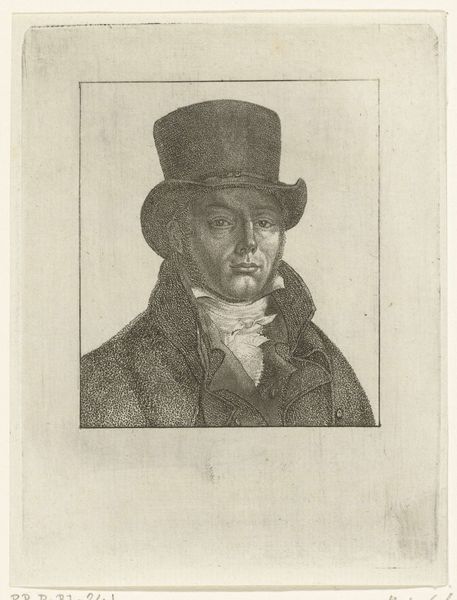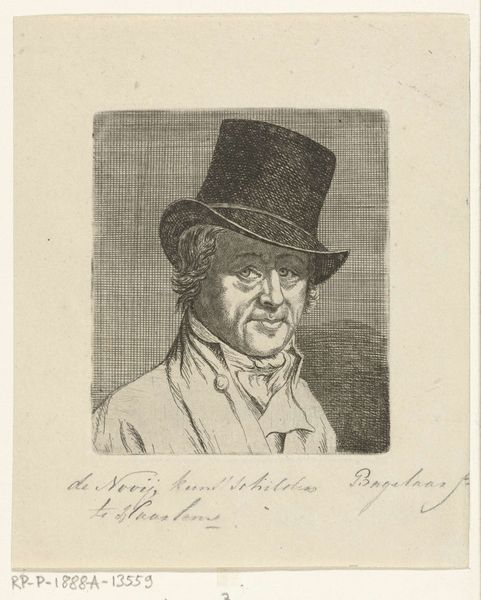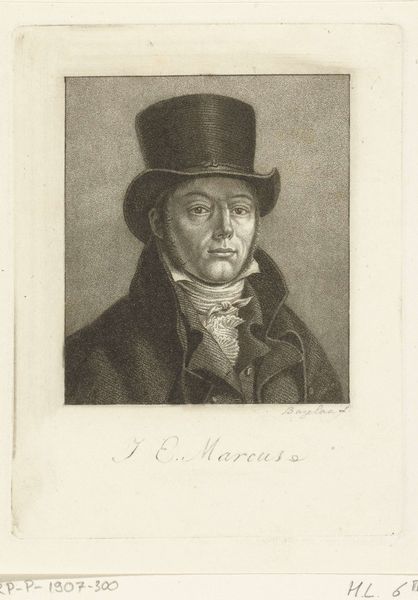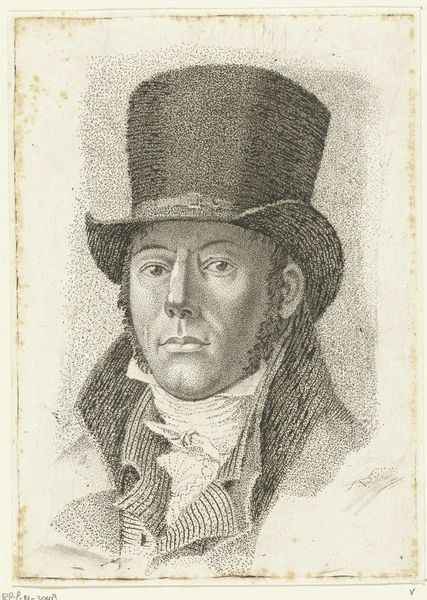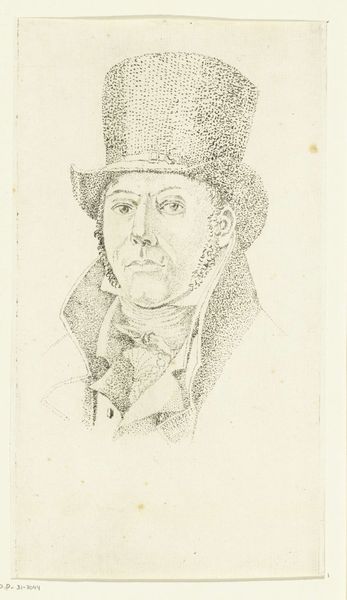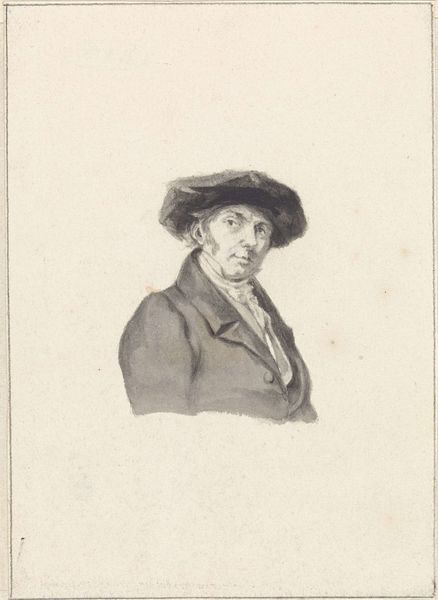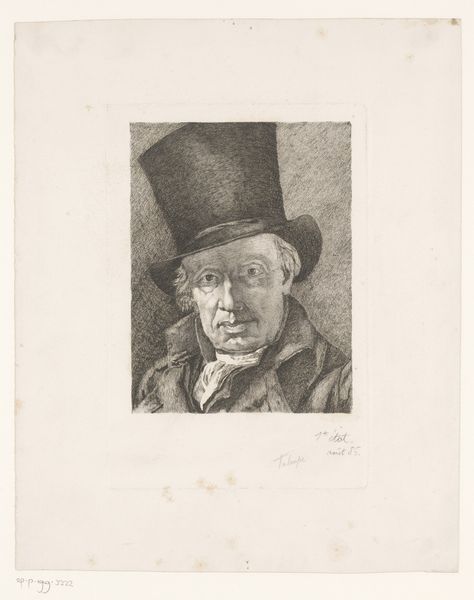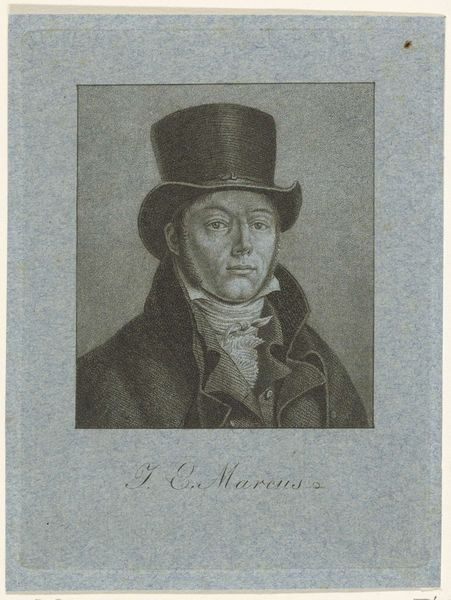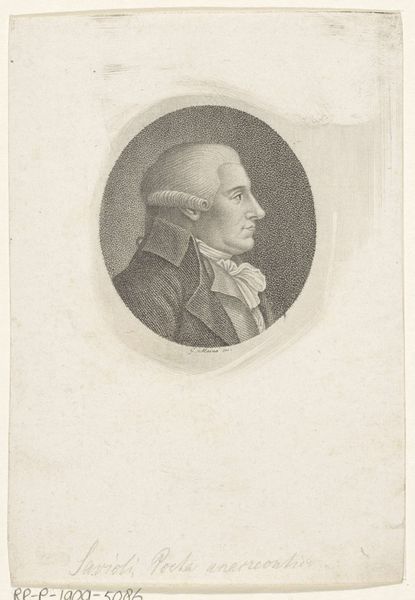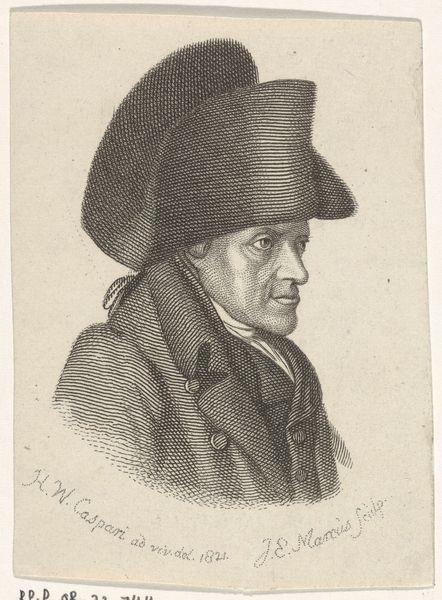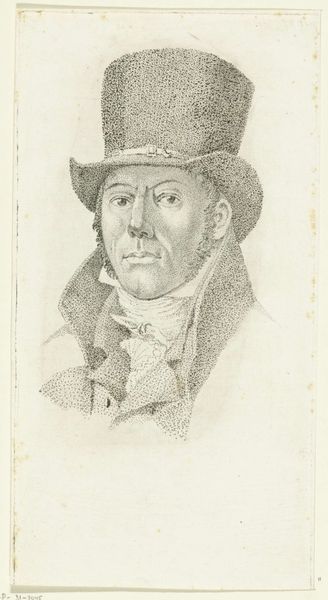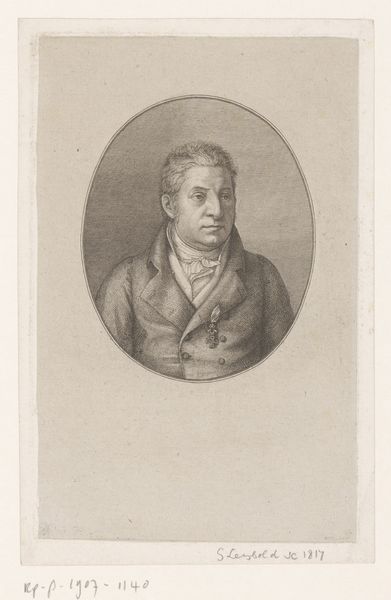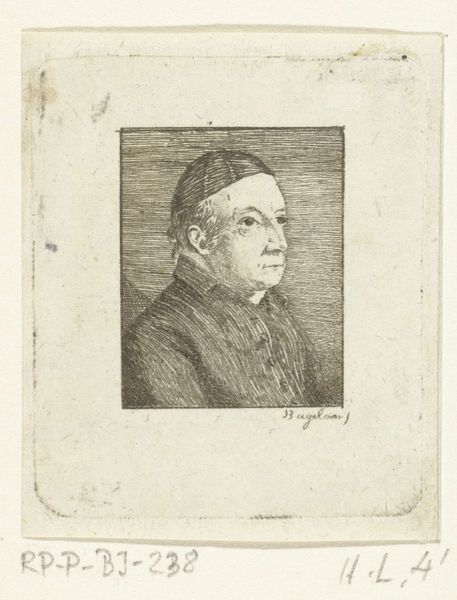
print, engraving
#
portrait
# print
#
pencil sketch
#
charcoal drawing
#
pencil drawing
#
history-painting
#
engraving
Dimensions: height 120 mm, width 92 mm
Copyright: Rijks Museum: Open Domain
Curator: This is "Portret van Jacob Ernst Marcus," a print created by Ernst Willem Jan Bagelaar sometime between 1798 and 1826. It showcases a man in formal attire, primarily through engraving techniques. Editor: It’s quite stark, isn’t it? There’s a seriousness in his gaze, a sense of restrained authority. The monochromatic palette certainly contributes to this mood. It feels… distant, in a way. Curator: Portraits of this era often served as signifiers of social standing and identity. Notice the high collar and the meticulously drawn top hat, all communicating a certain level of bourgeois respectability. Think about the era; the aftershocks of revolution and societal shifts certainly play a role in how identities were consciously performed and recorded. Editor: Indeed, those elements speak volumes. The top hat in particular, during that period, functioned almost as a symbol itself—denoting aspiration and industry, if not wealth. However, I see a more personal visual message at play. It feels intentionally arranged to recall certain classical ideals: notice his stern expression, the rigid lines and strong shadows giving a subtle suggestion of power and classical restraint. The ascendance of this figure suggests not only external forces but inherent strengths. Curator: Absolutely, we can examine how artistic choices, such as his stoic gaze, and the meticulous detail of his clothing, reflect wider societal structures of the time. Bagelaar places Jacob firmly within the visual language of emergent capitalism and associated cultural power dynamics. Editor: I wonder, also, about the engraving technique itself, and its impact on visual meaning-making. The tight lines of the etching contribute so powerfully to the aura of decorum, as though the individual is both present but also firmly situated as representative of social class. Curator: Considering printmaking, we can explore ideas of reproduction, distribution, and accessibility, too, thus questioning who had access to representation, and how this medium participated in reinforcing and/or challenging prevailing social hierarchies. This piece also compels a look at gender, posing key questions: How did representations of masculinity support specific values or ideals in this era? Editor: These details create an incredible dialogue between public and private, immediate presence and symbolic message. The individual becomes both an immediate likeness and timeless figure—in that era, as now. Curator: A rich lens into a particular time. Editor: Indeed, an excellent point of reflection.
Comments
No comments
Be the first to comment and join the conversation on the ultimate creative platform.
